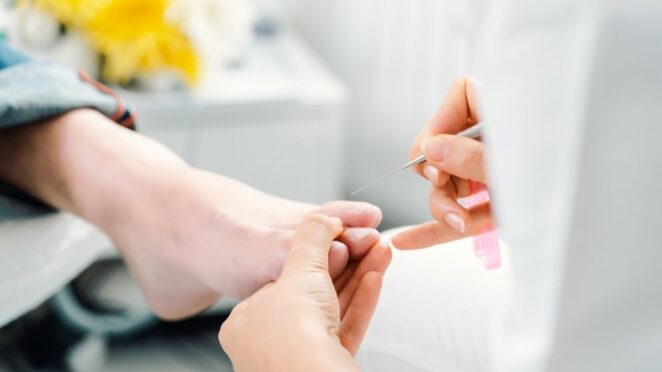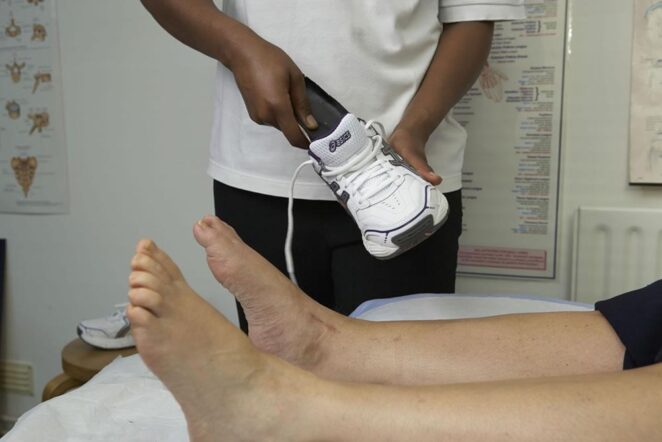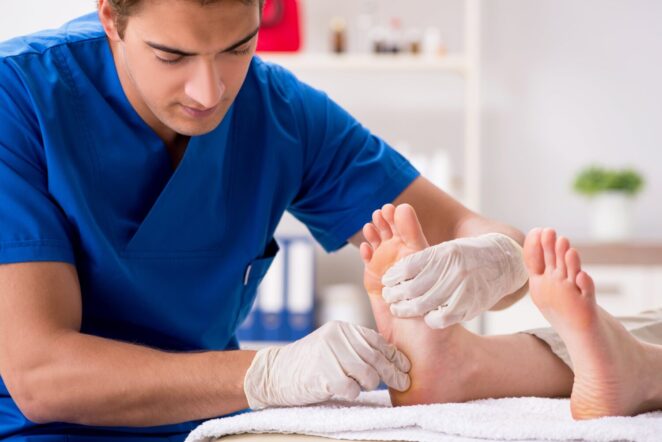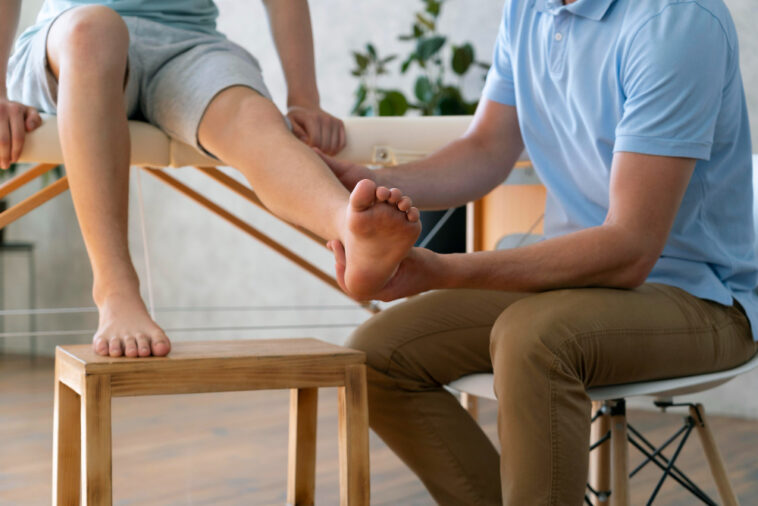If you are an athlete or an active individual, then you know how important it is to take good care of your feet. Foot injuries are common among active individuals and can impede performance and limit activities. Fortunately, there are some simple steps that you can take to reduce your risk of a foot injury. This guide from a chiropodist will provide a range of tips on preventing foot injuries while participating in sports and physical activities.
Causes of Injuries
The cause of any foot injury can vary greatly. Poor technique and over-exertion are two of the most common causes, but it’s important to be aware of other potential contributing factors. Foot injuries can happen due to a number of causative agents including repeated or excess force on feet, sharp objects, poor footwear, or decreased flexibility and strength.
Additionally, environmental hazards such as uneven terrain or excessively hard surfaces may also contribute to foot pain or injury. Understanding the causes of foot injury and finding experts that can help you like a chiropodist in Oshawa can help you better prevent them in the future by taking steps such as wearing appropriate and properly fitting shoes for each activity and increasing flexibility through exercises that target foot muscles.

What are the Symptoms?
It is important to recognize the symptoms of a foot injury so that you can take steps to prevent more serious damage. Common injuries you should be on the lookout for include: pain or bruise that does not go away, swelling in one or more areas of the foot, redness and/or warmth in a localized area, and inability to put weight on the affected area.
Other signs of a possible injury include difficulty finding shoes that fit well or are comfortable, difficulty moving toes or other parts of your foot, and general discomfort during activity. These types of indirect symptoms can indicate the early stages of an injury and require proper attention for prevention. In these cases, seeking an assessment from an experienced chiropodist can help in determining what initial precautions and treatments are necessary.
Prevention Strategies
The best way to avoid pain or injury is through preventative measures. A chiropodist can provide personalized advice and tips on how to reduce the risk of such injuries.
Here are some prevention strategies that you should consider incorporating into your routine provided by a chiropodist:
- Increase your daily activity gradually, especially if you haven’t been active in a while. This will help your body get used to the added stress on the foot muscles and bones
- Wear appropriate footwear for activities; if necessary, consult a podiatrist regarding tailor-made orthotics
- Train regularly with exercises designed to strengthen the feet and ankles; these may include calf stretches, calf raises, and toe curls
- Participate in sports that require little impact on the feet such as swimming or biking
- Allow adequate time for recovery of sore feet by avoiding prolonged periods of activity
- Pay attention to signs of discomfort such as pain or swelling; any such feelings should not be ignored
- Maintain good hygiene practices such as changing socks often; dirty socks can cause irritation in the skin or infections including athlete’s foot
- Above all else – listen to your body! If something doesn’t feel right then take appropriate action quickly

Proper Footwear
Finding the right kind of footwear for physical activity can help to prevent injuries and alleviate the stress placed on feet. When selecting athletic or other footwear, consider the following tips to ensure that you choose appropriate shoes:
- Opt for shoes specifically designed for your sport and consider specialized versions (e.g., cleats and spikes) when appropriate.
- Select a shoe that fits properly: Shoes should be snug and provide some space between your big toe and the end of the inside of the shoe; this helps to avoid cramped toes.
- Choose a shoe with structure in all directions: Look for shoes with adequate heel counter (to keep feet stable), arch support, and toe box width.
- Consider shock absorption when selecting running shoes: Cushioning at the heel can help to absorb impact forces caused by running — look for midsoles made from polymer foam materials like ethylene vinyl acetate or polyurethane.
- Avoid walking around in high-heeled or ill-fitting dress shoes as much as possible — such shoes place excessive stress on feet which can increase your risk of injury over time.
Stretching and Strengthening
An important part of injury prevention is engaging in activities that stretch and strengthen the muscles of the foot, ankle, and lower leg. This includes stretching the Achilles tendon, calf muscle, and plantar fascia area. Increasing the flexibility of these muscles can help athletes move more efficiently and give them better control over their movement.
In addition to stretching, strengthening exercises should be a regular part of any routine intended to decrease the risk of injury. Strengthening exercises focus on building up weaker areas of the foot and leg, such as weak arches or underdeveloped muscles. An example would be doing heel raises or arch lifts with a band looped between both feet during your workout.

Treatment Options
Once an injury has occurred, the treatment plan should be tailored to an individual’s specific type of injury. Options may include rest and rehabilitation such as stretching, strength training, and bracing to reduce pain and improve stability. In some cases, the use of a custom-made orthotic device can help to realign the foot or ankle and support healing.
Other treatments may include physiotherapy exercises, massage therapy, or medical intervention like cortisone injections or anti-inflammatory medications. For chronic injuries that do not heal with conservative measures, surgery may be recommended by your chiropodist. Surgery is not always necessary but can be beneficial in providing long-term relief from foot pain.
Conclusion
Athletes and active individuals should be aware that any type of discomfort found in the feet, legs, hips, or back could be related to a foot injury or imbalance. Being mindful and taking action at the first sign of discomfort can prevent future injury and promote overall health.
The best way to minimize injuries is through preventative measures such as proper shoe selection, good foot hygiene, and appropriate strengthening exercises. It is also important to regularly visit a chiropodist who can identify risk factors, treat existing injuries, and make custom-made orthotics when necessary.
Taking these steps can help you stay healthy and active for years to come!




